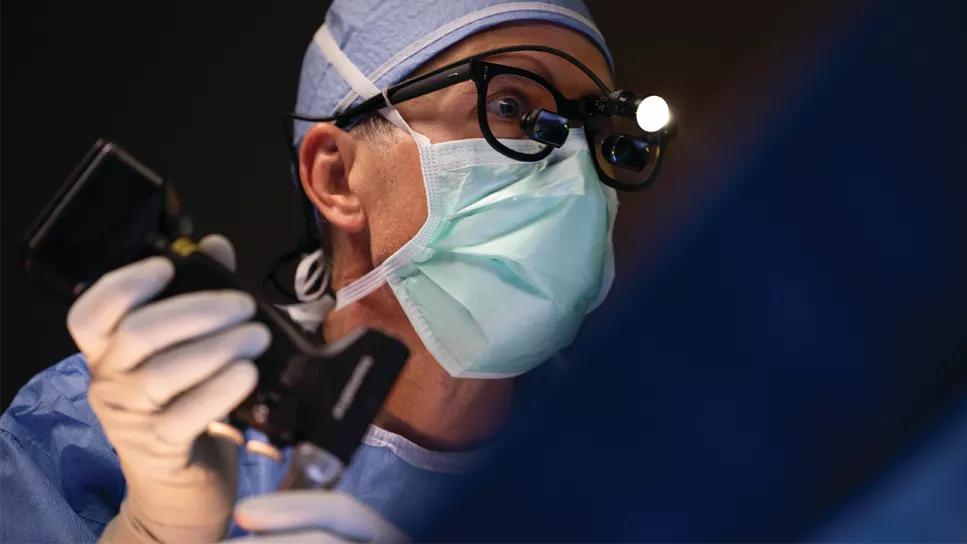Neurosurgery luminaries share a generation’s worth of experience and wisdom

Advertisement
Cleveland Clinic is a non-profit academic medical center. Advertising on our site helps support our mission. We do not endorse non-Cleveland Clinic products or services. Policy
It started with words of wisdom from beloved neurosurgery giant Edward C. Benzel, MD, and ended with a roast and gala in his honor. In between, more than 60 speakers and moderators presented 50-some short talks and panel discussions running the gamut of topics in spinal surgery, each infused with lessons from Dr. Benzel’s illustrious career.
That’s the quick take on the Benzel Symposium: State of the Art in Complex Spine Surgery, a two-day CME symposium held immediately before the American Association of Neurological Surgeons (AANS) 2019 annual scientific meeting in April — a course I was honored to co-direct with Gregory Trost, MD, of the University of Wisconsin.
A fuller take is a challenge in the format of a blog post, which simply can’t do justice to the wealth of clinical and practice insights shared at the event. Instead I’ll share highlights in a handful of areas that endure a few weeks afterward.
The AANS-sponsored symposium started with a keynote presentation from Dr. Benzel, “Doing What’s Right: Leadership, Knowledge, Wisdom and Inspiration,” reflecting on his career, which has included long stints as Chair of Cleveland Clinic’s Department of Neurological Surgery and Director of its Center for Spine Health. (He’s shown in the photo at the top of this post in the OR a few years ago.)
Beyond bringing to the field a clear vision to do the right thing for patients and consistently inspiring others to work with him toward that goal, Ed left a lasting mark at the intersection of neurosurgery and orthopaedic surgery. He encouraged cooperation and egalitarianism between these competing specialties during a controversial time when neurosurgeons concentrated on delicate tissue surgery and left the mechanical screw-and-rod reconstructions to orthopaedists. Ed tempered this turf war by becoming an expert on spinal biomechanics and bringing the two specialties closer together in the spirit of collaboration. When he stepped down as Director of Cleveland Clinic’s Center for Spine Health a decade ago, he ensured that his replacement, Gordon Bell, MD, was an orthopaedic surgeon.
Advertisement
A number of talks were devoted to deformity, including how vertebral column resection has revolutionized care and techniques for spinal realignment. Attendees got a glimpse of the future with a talk on the burgeoning field of predictive analytics for deformity repair. In an area of spinal surgery that is particularly prone to unpredictability, we will soon be better selecting patients for various surgery types and approaches, as well as predicting individual outcomes with greater certainty based on large amounts of data and advanced computer algorithms.
Development of minimally invasive techniques continues at a rapid pace in all surgical specialties. Speakers at the symposium included a number of surgeons who have helped drive spinal surgeries to becoming smaller and less traumatic. They shared how they developed new devices and techniques and then turned them into standards of care.
What’s next? Robotics, neuronavigation and operating only with local anesthesia are now emerging. A call was put out to the younger symposium attendees to run with these advances to bring even gentler techniques to the operating table.
Several speakers addressed the evolution of spine tumor treatment and Dr. Benzel’s enormous impact on the field. National and international experts spoke on current surgical management, including en bloc resection for spinal neoplasms. Stereotactic spine radiosurgery — an emerging noninvasive option for benign tumors as well as primary and metastatic malignant tumors — was described as a game changer for patients that will continue to advance in the decades ahead.
Advertisement
We were treated to much discussion by the best researchers working on state-of-the-art developments in spinal cord injury. This included an update from the North American Clinical Trials Network Spinal Cord Injury Registry, which supports research beyond the scope of single institutions.
Among the most exciting research profiled:
One talk — “Don’t Think ‘Out of the Box’…There is NO BOX” — encapsulated a major theme of the symposium. With so many neurosurgery innovators present — including Dr. Benzel, a holder of 10 patents, and numerous other giants of the field in attendance — there was an unmistakable vibe aimed at both imparting wisdom about how advances are brought to fruition and encouraging the next generation to take the baton and further drive the field forward.
All along the way, we were reminded to consider the patient first while conducting research and providing clinical care — the most important lesson from Dr. Benzel’s legacy.
Dr. Steinmetz is Chair of Cleveland Clinic’s Department of Neurosurgery and was course co-director for the Benzel Symposium.
Advertisement
Advertisement

Large NIH-funded investigation is exploring this understudied phenomenon

Advances in genomics, spinal fluid analysis, wearable-based patient monitoring and more

Case study of radial-to-axillary nerve transfer for tumor-related deltoid nerve injury

An update on the technology from the busiest Gamma Knife center in the Americas

Real-time adjustments may help reduce bothersome dyskinesias

Anatomical modeling can identify optimal surgical candidates, study suggests

Add AI to the list of tools expected to advance care for pain patients

New guidelines from Brain Trauma Foundation urge early and aggressive treatment